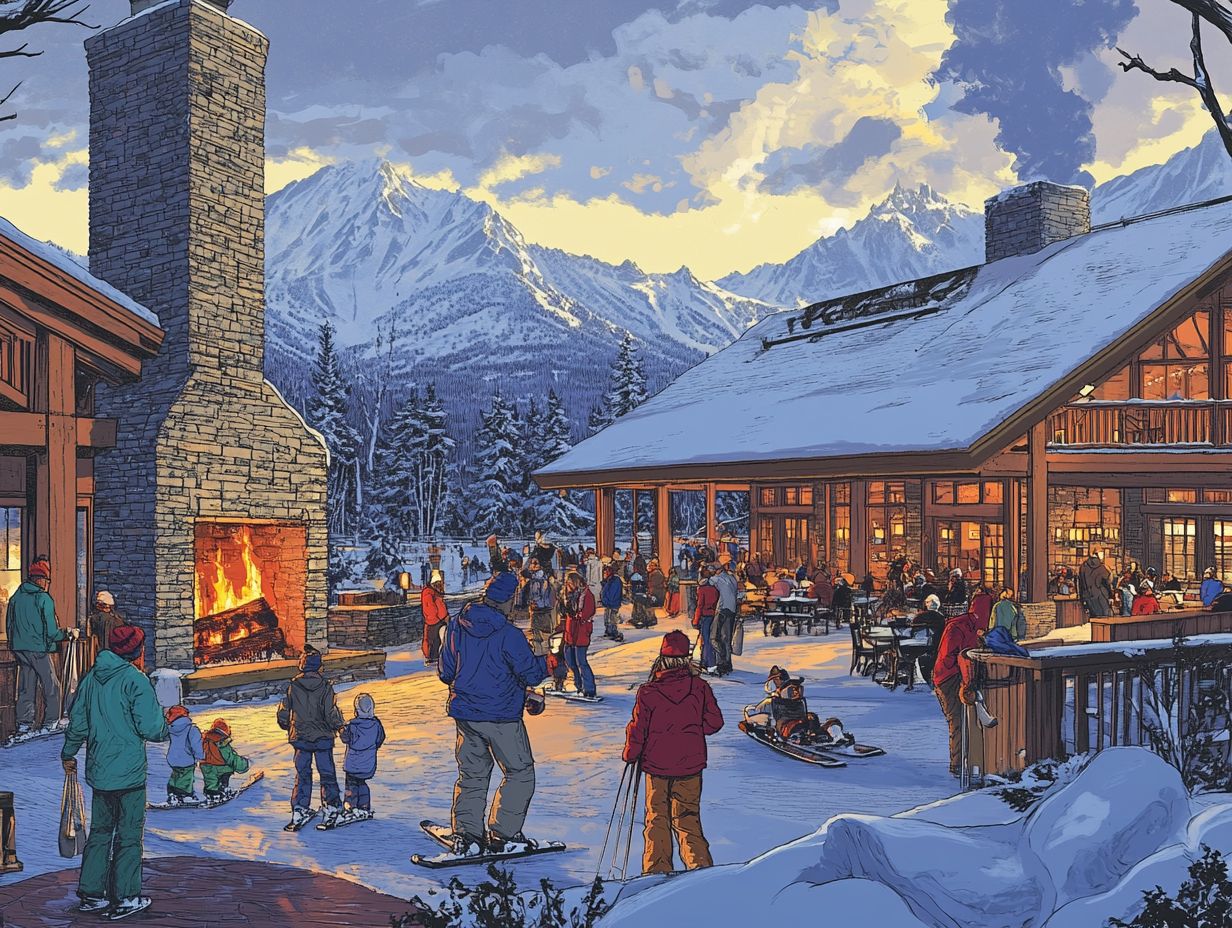In the vibrant world of ski lodges, understanding customer behavior and visitor patterns is essential for providing exceptional service. This article examines the importance of foot traffic insights and visitor analytics in shaping ski lodge management operations, emphasizing how these insights can help identify peak times and popular areas among guests. By leveraging data on guest movement, ski lodges can improve efficiency and enhance customer satisfaction. Additionally, we will discuss practical tools and techniques for implementing foot traffic analysis, enabling lodges to customize their services for an unforgettable guest experience.
The Importance of Foot Traffic Insights for Ski Lodge Services

Foot traffic insights are crucial for ski lodge services as they allow for the analysis of visitor patterns, optimization of customer experience, and improvement of overall operational efficiency and service efficiency.
By analyzing data, ski lodges can gain a better understanding of peak visitor times, assess occupancy rates and staff allocation and resource management, and adjust marketing strategies to align with seasonal trends.
Examining foot traffic patterns can enhance guest satisfaction and engagement, both of which are key factors in effective revenue management.
Additionally, understanding foot traffic enables ski lodges to tailor their service offerings to meet the needs and interests of visitors, thereby enhancing the overall experience during the ski season.
Understanding the Needs of Ski Lodge Visitors
The needs of ski lodge visitors significantly influence their overall experience and satisfaction during their stay. By conducting demographic analyses and gathering insights on visitor preferences, ski lodges can leverage this data to better serve their guests.
This understanding allows them to distinguish between the needs of skiers and snowboarders, families, and the requirements for ski equipment rentals across different skill levels and interests. Various visitor profiles come with distinct expectations of the lodge experience.
For families with young children, this may involve prioritizing family-oriented services, such as childcare options and kid-friendly menu selections. In contrast, adventure-seeking groups may expect a focus on après-ski activities, including nightlife and cultural experiences.
By understanding these diverse visitor demographics, lodges can develop more effective service improvement strategies and operational KPIs, ensuring that their amenities and services cater to those seeking a quiet retreat for couples as well as those looking for lively atmospheres for friends.
How Foot Traffic Insights Can Optimize Ski Lodge Services

Optimizing ski lodge services through insights gained from foot traffic involves identifying peak times and popular areas within the lodge, which ultimately enhances customer satisfaction and operational efficiency.
By analyzing visitor behavior using performance metrics and heat maps, ski lodges can determine where guests tend to congregate. This information allows for strategic resource allocation and improved service offerings.
Additionally, a data-driven approach that leverages real-time data and predictive analytics can inform pricing strategies, seasonal promotions, and staff training, ensuring that the ski lodge effectively meets the expectations of its clientele.
Identifying Peak Times and Popular Areas
Identifying peak times and popular areas within a ski lodge is essential for optimizing operations and enhancing the guest experience. Data analysis techniques that track visitor patterns can help ski lodges pinpoint peak times and the most frequented areas.
This information is invaluable for staff allocation, ensuring that high-traffic areas are adequately staffed and stocked to meet guest needs, thereby improving overall operational efficiency.
Implementing time-of-day analysis allows ski lodges to determine when guests are more likely to utilize dining, shopping, or common areas, informing better staffing and inventory decisions.
Additionally, incorporating traffic flow metrics can reveal bottlenecks or underutilized spaces, creating opportunities for renovations and adjustments. Understanding these visitor patterns not only enhances operational efficiency but also improves the guest experience, as promptly meeting guest needs and effectively managing busy environments are crucial for overall satisfaction.
Improving Efficiency and Customer Satisfaction

Improvements in the operational efficiency of ski lodges have a direct impact on customer satisfaction, as streamlined services lead to an enhanced experience for guests. By employing upselling opportunities and cross-selling techniques, ski lodges can offer a more tailored range of services that meet the specific needs of their visitors. This approach not only increases revenue but also ensures that guests feel valued and attended to.
Responsiveness to customer feedback is essential for service enhancement and maintaining high occupancy rates. Resource management and allocation strategies, such as optimizing staff schedules based on peak times and fluctuating demand, can significantly boost operational performance.
Additionally, ensuring thorough staff training will equip team members to deliver excellent service and foster a culture of continuous improvement.
Service design and level agreements (SLAs) are crucial, as they establish clear expectations for service delivery. Meanwhile, loyalty programs and customer retention strategies can be implemented to encourage repeat business and strengthen customer relationships.
Lastly, being agile and quickly adapting to market trends and guest preferences will enable ski lodges to navigate challenges and grow, ultimately enhancing their operations.
Implementing Foot Traffic and Visitor Insights Analysis in Ski Lodges
The implementation of foot traffic analysis in ski lodges involves various tools and techniques that assist in collecting essential data to enhance services and improve customer experience.
By analyzing visitor activity through methods such as heat maps and digital signage and user behavior tracking, ski lodges can gain valuable insights into traffic patterns and guest preferences. This information enables them to make informed, data-driven decisions regarding operational costs and resource allocation.
Utilizing these data analytics strategies and demographic analysis can lead to improved customer retention and loyalty programs, a stronger brand image, and increased customer loyalty.
Tools and Techniques for Gathering and Analyzing Visitor Data

The use of the right tools and techniques for data collection is essential to analyzing foot traffic at ski lodges. By utilizing digital insights platforms, ski lodges can effectively track and analyze customer journeys and user engagement, gaining a better understanding of visitor behaviors and preferences. Analytics solutions, such as visitor feedback loops and online booking systems and analytics, provide valuable data points that can inform operational decision-making and marketing strategies, ultimately improving guest satisfaction and enhancing the services offered.
Additional analytics tools can aid in measuring performance metrics, enabling lodges to identify peak visitation times and assess user experience. Customer Relationship Management (CRM) systems ensure that information gathered through surveys and online reviews is systematically processed, allowing for real-time adjustments to engagement strategies. Furthermore, social media engagement and monitoring software can enrich the data collection process by offering insights into customer sentiment and preferences.
By combining these diverse solutions, ski lodges can develop a comprehensive understanding of their customer base, leading to more targeted promotions and offerings.
Utilizing Data for Service Improvements
Using data to enhance services and customer satisfaction at ski lodges involves leveraging insights gained from analyzing foot traffic and other indicators to implement changes that improve the overall customer experience. By systematically analyzing performance metrics and customer feedback, ski lodges can identify areas for improvement in their service offerings and optimize staff allocations during peak hours.
This approach not only enhances customer satisfaction but also boosts operational efficiency, aiding in revenue management.
For instance, a popular ski lodge employed data analytics to create a loyalty rewards program and customer feedback loops and discovered that returning customers valued personalized seasonal promotions. By examining booking patterns, they were able to adjust their pricing strategies to make rates more attractive during peak demand periods, resulting in increased occupancy and customer loyalty.
Similarly, by assessing customer feedback on amenities, the lodge introduced packages catering to families and beginners, thereby improving customer satisfaction and encouraging repeat visits.
These examples illustrate the importance of using data analytics to inform strategies for service improvement at ski lodges.






